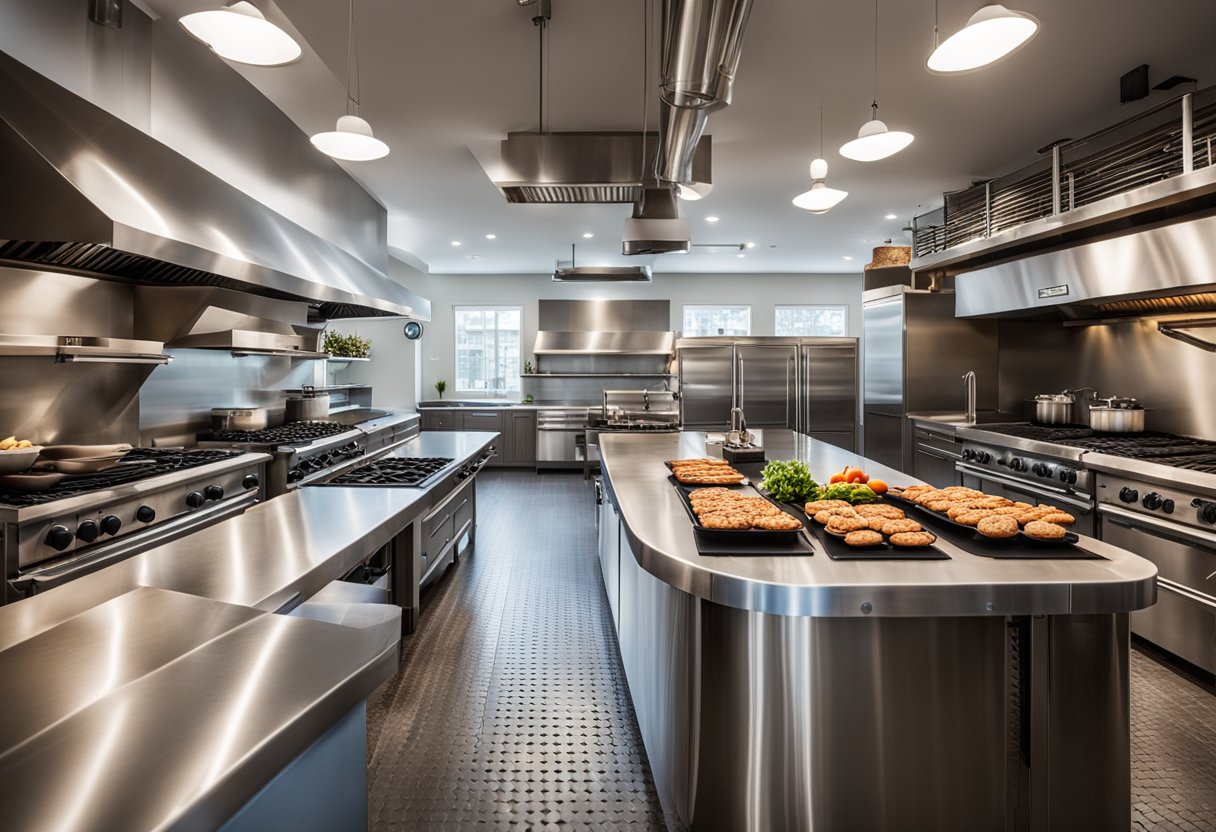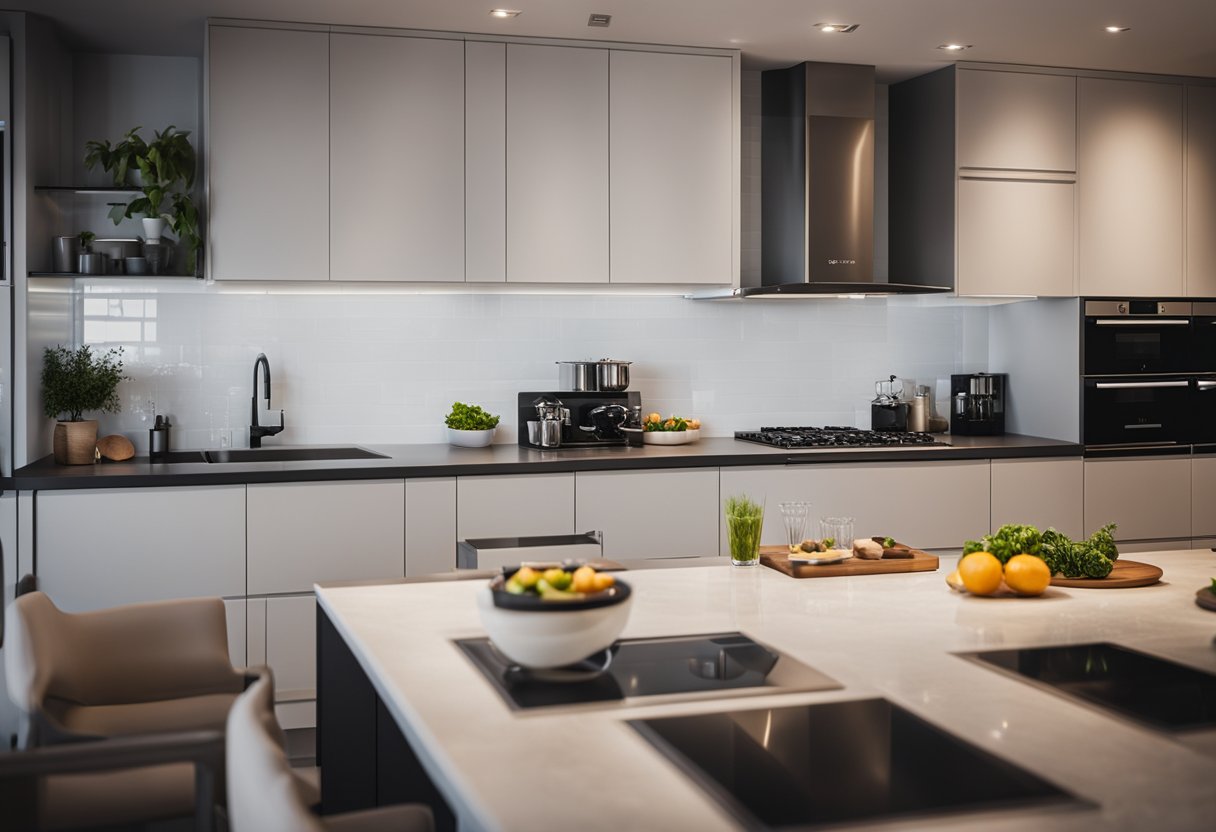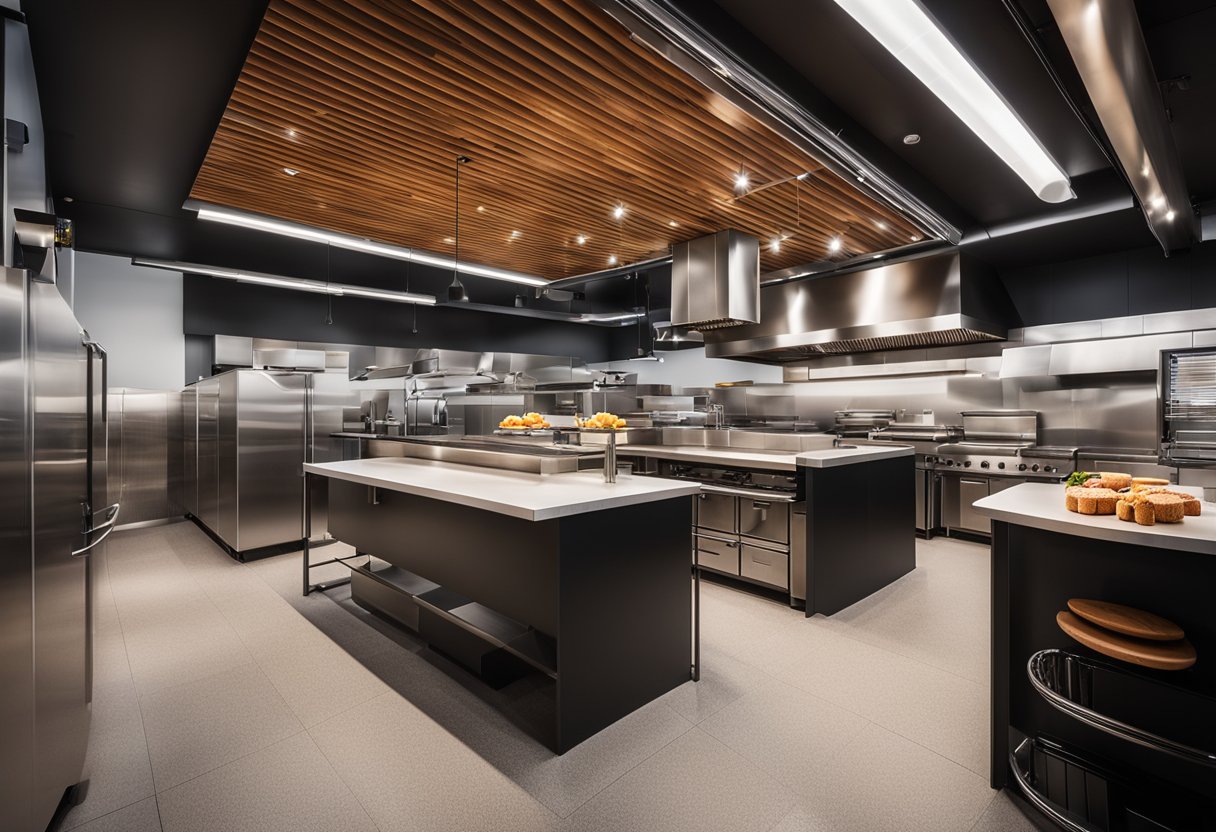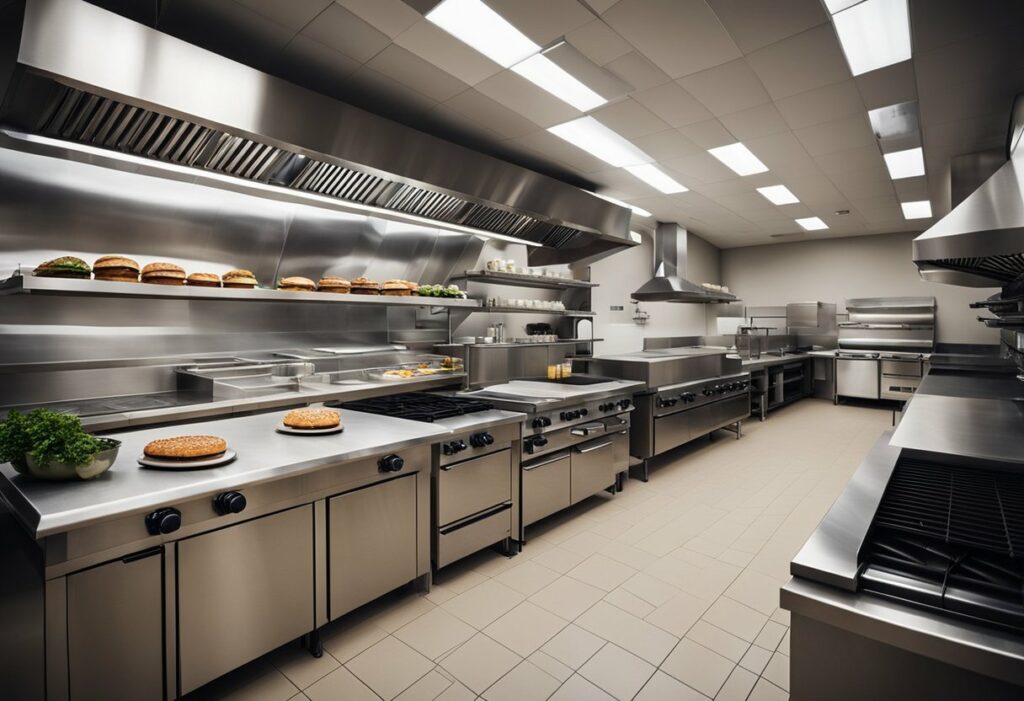Burger Kitchen Design: Creating the Ultimate Burger Experience
If you’re planning to open a burger joint, designing the kitchen is a crucial aspect of the process. The design of your burger kitchen can impact your efficiency, profitability, and customer satisfaction. You want to create a space that is both functional and attractive, while also meeting the needs of your staff and customers.

There are several essential components of burger kitchen design that you should consider. For example, you need to have the right equipment, such as commercial-grade ovens, grills, and fryers, that can handle the volume of orders you expect to receive. You also need to have adequate storage space for ingredients and supplies, as well as a designated prep area where your staff can prepare food. Additionally, you need to have a strategic layout that allows for efficient movement of staff and minimizes the risk of accidents.
When it comes to the strategic placement and aesthetic choices of your burger kitchen, you want to create a space that is both inviting and functional. Consider the placement of your seating area, as well as the lighting and decor. You also want to make sure that your kitchen is designed in a way that is easy to clean and maintain, as hygiene is a top priority in the food industry. By taking the time to carefully design your burger kitchen, you can create a space that is both efficient and attractive, which can help you stand out in a crowded market.
Key Takeaways
- Essential components of burger kitchen design include the right equipment, adequate storage space, and a strategic layout.
- Strategic placement and aesthetic choices can impact the efficiency, hygiene, and customer satisfaction of your burger kitchen.
- A well-designed burger kitchen can help you stand out in a competitive market and improve your profitability.
Essential Components of Burger Kitchen Design

When designing a burger kitchen, there are several essential components that you need to consider to ensure that your kitchen is functional, efficient, and visually appealing. In this section, we will explore the key elements that are necessary for a successful burger kitchen design.
Optimising Kitchen Layout for Efficiency
The layout of your burger kitchen is critical to its functionality. A well-organised kitchen layout will improve the efficiency of your staff and reduce the time it takes to prepare orders. Consider the size and shape of your kitchen and the number of staff you will have working in it. You should aim to create a kitchen that has a logical flow, allowing staff to move around easily and quickly.
Selecting the Right Equipment for Burger Preparation
Choosing the right equipment is essential for a burger kitchen. You will need equipment like a commercial kitchen hood, fryers, grills, and griddles. When selecting your equipment, consider the size of your kitchen, the number of staff you will have, and the volume of burgers you plan to produce. You should also consider the quality of the equipment, as well as its durability and ease of maintenance.
Incorporating Design Elements for Brand Identity
Your burger kitchen should reflect your brand identity. Consider incorporating design elements like clean lines, bold colours, and modern finishes to create a contemporary look. Alternatively, you could opt for a more retro design, incorporating elements like neon signs and vintage furniture to create a nostalgic feel. Whatever design elements you choose, they should reflect your brand and create an engaging environment for your customers.
Lighting and Atmosphere Considerations
Lighting and atmosphere are important considerations when designing your burger kitchen. You should aim to create a casual, relaxed atmosphere that encourages customers to linger. Consider using warm, soft lighting to create a welcoming environment. You could also incorporate design trends like classic, polished finishes or industrial-style lamps to create a unique atmosphere.
Furnishing for Comfort and Style
Furnishing your burger kitchen is an important aspect of the design process. You should aim to create a comfortable and stylish environment that reflects your brand identity. Consider incorporating comfortable seating, like sofas or booths, to encourage customers to stay longer. You could also incorporate design elements like exposed brick walls or polished concrete floors to create an industrial-chic look.
Open Kitchen Concept: Engaging Customer Experience
An open kitchen concept is a popular design trend that can create an engaging customer experience. By allowing customers to see the kitchen and watch their burgers being prepared, you can create a sense of authenticity and transparency. This can be particularly effective if you are aiming to create a nostalgic or retro feel for your brand.
In summary, a successful burger kitchen design requires careful consideration of several key elements. By optimising your kitchen layout, selecting the right equipment, incorporating design elements for brand identity, considering lighting and atmosphere, furnishing for comfort and style, and potentially incorporating an open kitchen concept, you can create a burger kitchen that is both functional and visually appealing.
Strategic Placement and Aesthetic Choices

When designing your burger kitchen, there are several strategic placement and aesthetic choices that you should consider. These choices can help you create a cohesive visual theme that enhances the customer experience and maximizes footfall.
Choosing the Ideal Location for Maximum Footfall
Choosing the right location for your burger kitchen is crucial for success. You want to select a location that is easily accessible and visible to potential customers. Consider areas with high foot traffic, such as shopping centres, entertainment districts, and tourist attractions.
Creating a Cohesive Visual Theme
A cohesive visual theme can help enhance the atmosphere of your burger kitchen. Consider your website and branding when designing your kitchen. Use design elements that reflect your brand, such as your logo, colours, and typography. If you want to create a nostalgic or authentic atmosphere, consider using blackboards or vintage signage.
Enhancing Customer Experience with Thoughtful Details
Thoughtful details can enhance the customer experience and make your burger kitchen stand out. Consider adding design elements that reflect your brand, such as branded packaging, napkins, and coasters. If you want to create a casual atmosphere that appeals to families, consider adding nostalgic elements like vintage toys or board games.
Overall, strategic placement and aesthetic choices can help you create a burger kitchen that is both visually appealing and functional. By considering your location, branding, and customer experience, you can create a space that appeals to a wide range of customers and maximizes footfall.
Frequently Asked Questions

How can you maximise efficiency in a bustling burger joint’s kitchen layout?
To maximise efficiency in a busy burger joint, it is essential to have a well-designed kitchen layout. You should consider the flow of traffic, the placement of equipment, and the location of storage areas. The goal is to create a space that allows your team to work quickly and efficiently, without getting in each other’s way.
What essential equipment should be included in a modern burger kitchen?
A modern burger kitchen should have a range of essential equipment to ensure your team can work efficiently and produce high-quality food. Some of the essential equipment includes a grill, fryers, refrigeration units, prep tables, and storage areas. You should also invest in high-quality knives, cutting boards, and other tools that your team will need to prepare ingredients.
Could you suggest some innovative design ideas for a small-scale burger kitchen?
If you have a small-scale burger kitchen, you need to be creative with your design to maximise the use of space. You can consider using multi-purpose equipment, such as a grill that also functions as a griddle or a fryer that can also be used as a pasta cooker. You can also use vertical storage to store utensils, pots, and pans.
What are the top considerations for maintaining food safety in a burger kitchen design?
Food safety is crucial in any kitchen, and it should be a top consideration in your burger kitchen design. You should ensure that your kitchen layout allows for proper food storage, preparation, and cooking. You should also consider the placement of sinks, hand washing stations, and sanitising stations. It is essential to have a cleaning schedule and ensure your team is trained in food safety practices.
How does workflow impact the design of a commercial burger kitchen?
Workflow is essential in a commercial burger kitchen. The design of your kitchen should allow for an efficient flow of ingredients, equipment, and team members. You should consider the placement of equipment, storage areas, and prep stations to ensure your team can work quickly and efficiently.
What are the latest trends in burger kitchen designs that enhance customer experience?
The latest trend in burger kitchen design is to create an open kitchen that allows customers to see their food being prepared. You can also consider using natural materials, such as wood and stone, to create a warm and inviting atmosphere. Another trend is to offer customisable burgers, allowing customers to choose their own ingredients and toppings. This not only enhances the customer experience but also allows for greater efficiency in the kitchen.



